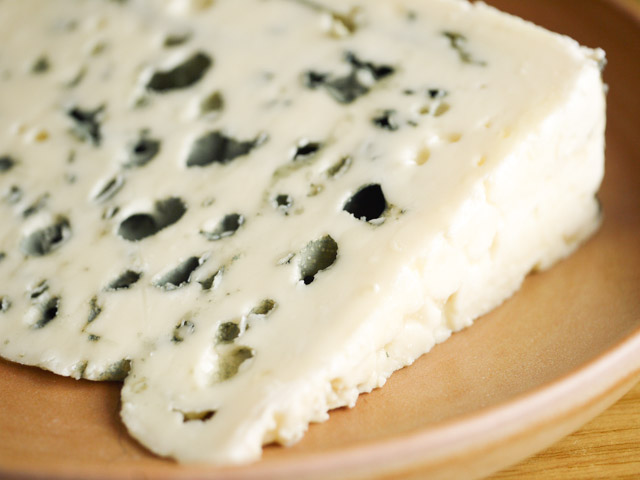The War On Raw Cheese Continues
By Erika Kubick in Food on Sep 11, 2014 6:00PM

Since my love for cheese evolved into a life-absorbing obsession, there is one cheese that has utterly captivated my heart. That cheese is Roquefort, the most popular blue cheese in France, with a white creamy paste that offers sweet, nutty notes, blue, palate-dominating pockets and a dangerously addictive burn that begins at the tip of your tongue, trailing all the way down to the pit of your stomach. While many deem Parmigiano-Reggiano the King of all cheese, I know that our queen is Roquefort.
Her reign may soon come to an end in America, due to the FDA’s decision to change the allowance for non-toxigenic Escherichia coli (E. coli) in dairy products. Non-toxigenic E. coli is a typically harmless bacterium found in the human gastrointestinal tracts as well as in raw milk cheeses. Recently, the FDA changed their allowance for this bacteria from a Most Probable Number (MPN) of 100 per gram, a fairly average amount in raw cheese, to 10 MPN per gram. Because of this drastic decrease, Roquefort and other cheeses such as raw milk versions of Morbier and Tommes de Savoie are now on Import Alert. The cheeses are held on Detention without Physical Examination, the FDA's infamous "red list."
The FDA is detaining the raw milk cheeses in order to take at least 1,600 samples. Their goal is to determine how often certain foods, specifically raw milk cheeses, are liable to become contaminated under the new definition. The samples are comprised of cheeses coming from Austria, Belgium, Bulgaria, Canada, Cyprus, Denmark, France, Germany, Ireland, Italy, Mexico, Netherlands, Nicaragua, Poland, Portugal, Spain, Swaziland, Switzerland, the United Kingdom, and the U.S. The FDA wrote this letter to the American Cheese Society, outlining their objectives in this study.
The FDA’s changes on bacterial allowance have caused unrest in the cheese community, with many feeling blindsided. These raw cheeses are the same as they’ve always been, with creameries maintaining the same recipes and techniques that they have used for centuries. Raw milk cheeses are subject to inconsistency- that’s what makes each wheel so beautiful and unique. Maintaining the low limit of 10 MPN is next to impossible, and American cheese producers are worried what this means for their business and for America. “There was no health risk in all the years we operated at 100 MPN,” David Gremmels of Oregon’s Rogue Creamery tells LA Times, “We look at this as an arbitrary change.” Cary Bryant, Rogue’s cheese maker also shared his queasiness over the new regulations, telling LA Times that people need the microbial diversity that raw milk offers. "This is going to create people with immune systems that can never handle anything,” Bryant states.
WBEZ notes the Illinois Department of Public Health has proposed regulations that would require raw milk producers to invest in new equipment and share customer lists with the government. If you’d like to share your views on the issue of raw milk, the Illinois Department of Public Health is welcoming comments here.
It seems that the main question on everybody’s mind is, quite simply, why? Both the Illinois Department of Public Health and the FDA are spending time and money fighting against raw milk cheeses, foods that have been consumed for centuries. Aren’t these resources better used in the fight against real problems? For now, let us enjoy our raw milk cheeses, like our cheese of the month Comté, while we still can.